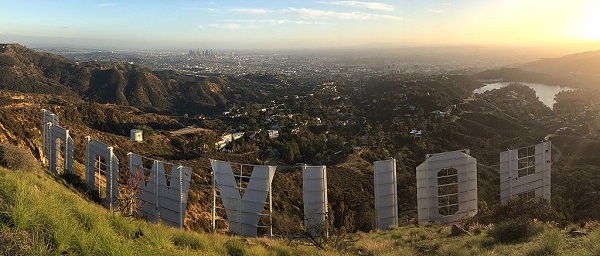Uncategorized
Fire death toll at 56 and counting in Northern California

MAGALIA, Calif. — Cool weather helped fire crews gain ground Thursday against the nation’s deadliest wildfire in a century, as the search went on for more bodies. At least 56 people were killed and 300 were unaccounted for a week after the flames swept through.
The nearly 220-square-mile (
More than 450 searchers were assigned to look for remains in Paradise, which was all but destroyed Nov. 8, and in outlying areas such as Magalia, a forested town of about 11,000. Many of the missing were elderly and from Magalia.
“If this town does recover, it’s going to take many, many years,” said Johnny Pohmagevich, an 18-year Magalia resident who lives up the road from many burned homes.
Police drove around town, searching for those still in their homes and checking if they needed food and water.
Butte County Sheriff Kory Honea said Wednesday night that 130 people were missing. His office later released a list of 300 who were unaccounted for, though spokeswoman Miranda Bowersox said some of those may simply not have checked in with officials or family.
At the other end of the state, crews made progress against a blaze of more than 153 square miles (396 square
At least three deaths were reported in Southern California.
Officials in Northern California put the number of homes lost there at nearly 8,800, and the sheriff said the task of recovering remains had become so vast that his office brought in 287 more searchers Wednesday, including National Guard troops. The search crews used 22 cadaver dogs.
Interior Secretary Ryan Zinke joined California Gov. Jerry Brown on a visit to Paradise on Wednesday, saying it was the worst fire devastation he had ever seen.
“Now is not the time to point fingers,” Zinke said. “There are lots of reasons these catastrophic fires are happening.” He cited higher temperatures, dead trees and the poor forest management.
The governor said officials would need to learn how to better prevent fires from becoming so deadly .
It will take years to rebuild, if people decide that’s what should be done, said Brock Long, administrator of the Federal Emergency Management Agency. “The infrastructure is basically a total rebuild at this point,” he said.
While most of Paradise was wiped out, in Magalia there was a sharp dividing line between homes that burned and those that were spared.
“Magalia has so many trees. I honestly can’t believe it just didn’t get
Tom Driver, the office manager and elder at Magalia Community Church, said he heard the church made it through the blaze, though he did not know whether his home did.
“I’ve been able to account for all of the congregation,” said Driver, who is staying with family in Oakland. “They’re all over the place, but they got out in pretty good time.”
Kim Bonini, one of those who got out safely, left after hearing someone on a bullhorn two blocks over urging people to leave. The power in her home had gone out that morning, leaving her with only her car radio.
“My cell didn’t work, my house phone didn’t work, nothing. Nothing except for me crawling into my car,” Bonini said from her daughter’s home in Chico. “If I wouldn’t have heard them two blocks down, I wouldn’t have known I had to evacuate.”
___
Associated Press writers Janie Har and Olga R. Rodriguez in San Francisco, Amy Taxin in Santa Ana, California and Andrew Selsky in Salem, Oregon, also contributed to this report.
Kathleen Ronayne, The Associated Press
Uncategorized
Cost of bureaucracy balloons 80 per cent in 10 years: Public Accounts

The cost of the bureaucracy increased by $6 billion last year, according to newly released numbers in Public Accounts disclosures. The Canadian Taxpayers Federation is calling on Prime Minister Mark Carney to immediately shrink the bureaucracy.
“The Public Accounts show the cost of the federal bureaucracy is out of control,” said Franco Terrazzano, CTF Federal Director. “Tinkering around the edges won’t cut it, Carney needs to take urgent action to shrink the bloated federal bureaucracy.”
The federal bureaucracy cost taxpayers $71.4 billion in 2024-25, according to the Public Accounts. The cost of the federal bureaucracy increased by $6 billion, or more than nine per cent, over the last year.
The federal bureaucracy cost taxpayers $39.6 billion in 2015-16, according to the Public Accounts. That means the cost of the federal bureaucracy increased 80 per cent over the last 10 years. The government added 99,000 extra bureaucrats between 2015-16 and 2024-25.
Half of Canadians say federal services have gotten worse since 2016, despite the massive increase in the federal bureaucracy, according to a Leger poll.
Not only has the size of the bureaucracy increased, the cost of consultants, contractors and outsourcing has increased as well. The government spent $23.1 billion on “professional and special services” last year, according to the Public Accounts. That’s an 11 per cent increase over the previous year. The government’s spending on professional and special services more than doubled since 2015-16.
“Taxpayers should not be paying way more for in-house government bureaucrats and way more for outside help,” Terrazzano said. “Mere promises to find minor savings in the federal bureaucracy won’t fix Canada’s finances.
“Taxpayers need Carney to take urgent action and significantly cut the number of bureaucrats now.”
Table: Cost of bureaucracy and professional and special services, Public Accounts
| Year | Bureaucracy | Professional and special services |
|
$71,369,677,000 |
$23,145,218,000 |
|
|
$65,326,643,000 |
$20,771,477,000 |
|
|
$56,467,851,000 |
$18,591,373,000 |
|
|
$60,676,243,000 |
$17,511,078,000 |
|
|
$52,984,272,000 |
$14,720,455,000 |
|
|
$46,349,166,000 |
$13,334,341,000 |
|
|
$46,131,628,000 |
$12,940,395,000 |
|
|
$45,262,821,000 |
$12,950,619,000 |
|
|
$38,909,594,000 |
$11,910,257,000 |
|
|
$39,616,656,000 |
$11,082,974,000 |
Uncategorized
Trump Admin Establishing Council To Make Buildings Beautiful Again


From the Daily Caller News Foundation
By Jason Hopkins
The Trump administration is creating a first-of-its-kind task force aimed at ushering in a new “Golden Age” of beautiful infrastructure across the U.S.
The Department of Transportation (DOT) will announce the establishment of the Beautifying Transportation Infrastructure Council (BTIC) on Thursday, the Daily Caller News Foundation exclusively learned. The BTIC seeks to advise Transportation Secretary Sean Duffy on design and policy ideas for key infrastructure projects, including highways, bridges and transit hubs.
“What happened to our country’s proud tradition of building great, big, beautiful things?” Duffy said in a statement shared with the DCNF. “It’s time the design for America’s latest infrastructure projects reflects our nation’s strength, pride, and promise.”
“We’re engaging the best and brightest minds in architectural design and engineering to make beautiful structures that move you and bring about a new Golden Age of Transportation,” Duffy continued.
Mini scoop – here is the DOT’s rollout of its Beautifying Transportation Infrastructure Council, which will be tasked with making our buildings beautiful again. pic.twitter.com/
9iV2xSxdJM — Jason Hopkins (@jasonhopkinsdc) October 23, 2025
The DOT is encouraging nominations of the country’s best architects, urban planners, artists and others to serve on the council, according to the department. While ensuring that efficiency and safety remain a top priority, the BTIC will provide guidance on projects that “enhance” public areas and develop aesthetic performance metrics.
The new council aligns with an executive order signed by President Donald Trump in August 2025 regarding infrastructure. The “Making Federal Architecture Beautiful Again” order calls for federal public buildings in the country to “respect regional architectural heritage” and aims to prevent federal construction projects from using modernist and brutalist architecture styles, instead returning to a classical style.
“The Founders, in line with great societies before them, attached great importance to Federal civic architecture,” Trump’s order stated. “They wanted America’s public buildings to inspire the American people and encourage civic virtue.”
“President George Washington and Secretary of State Thomas Jefferson consciously modeled the most important buildings in Washington, D.C., on the classical architecture of ancient Athens and Rome,” the order continued. “Because of their proven ability to meet these requirements, classical and traditional architecture are preferred modes of architectural design.”
The DOT invested millions in major infrastructure projects since Trump’s return to the White House. Duffy announced in August a $43 million transformation initiative of the New York Penn Station in New York City and in September unveiledmajor progress in the rehabilitation and modernization of Washington Union Station in Washington, D.C.
The BTIC will comprise up to 11 members who will serve two-year terms, with the chance to be reappointed, according to the DOT. The task force will meet biannually. The deadline for nominations will end Nov. 21.
-

 Alberta2 days ago
Alberta2 days agoAlberta on right path to better health care
-

 Business1 day ago
Business1 day agoCanada is failing dismally at our climate goals. We’re also ruining our economy.
-

 Crime2 days ago
Crime2 days ago‘Modern-Day Escobar’: U.S. Says Former Canadian Olympian Ran Cocaine Pipeline with Cartel Protection and a Corrupt Toronto Lawyer
-

 Alberta2 days ago
Alberta2 days agoAlberta Emergency Alert test – Wednesday at 1:55 PM
-

 Alberta1 day ago
Alberta1 day agoAlberta to protect three pro-family laws by invoking notwithstanding clause
-

 Health19 hours ago
Health19 hours agoCDC’s Autism Reversal: Inside the Collapse of a 25‑Year Public Health Narrative
-

 Alberta2 days ago
Alberta2 days agoCarney government’s anti-oil sentiment no longer in doubt
-

 Artificial Intelligence2 days ago
Artificial Intelligence2 days agoLawsuit Claims Google Secretly Used Gemini AI to Scan Private Gmail and Chat Data










